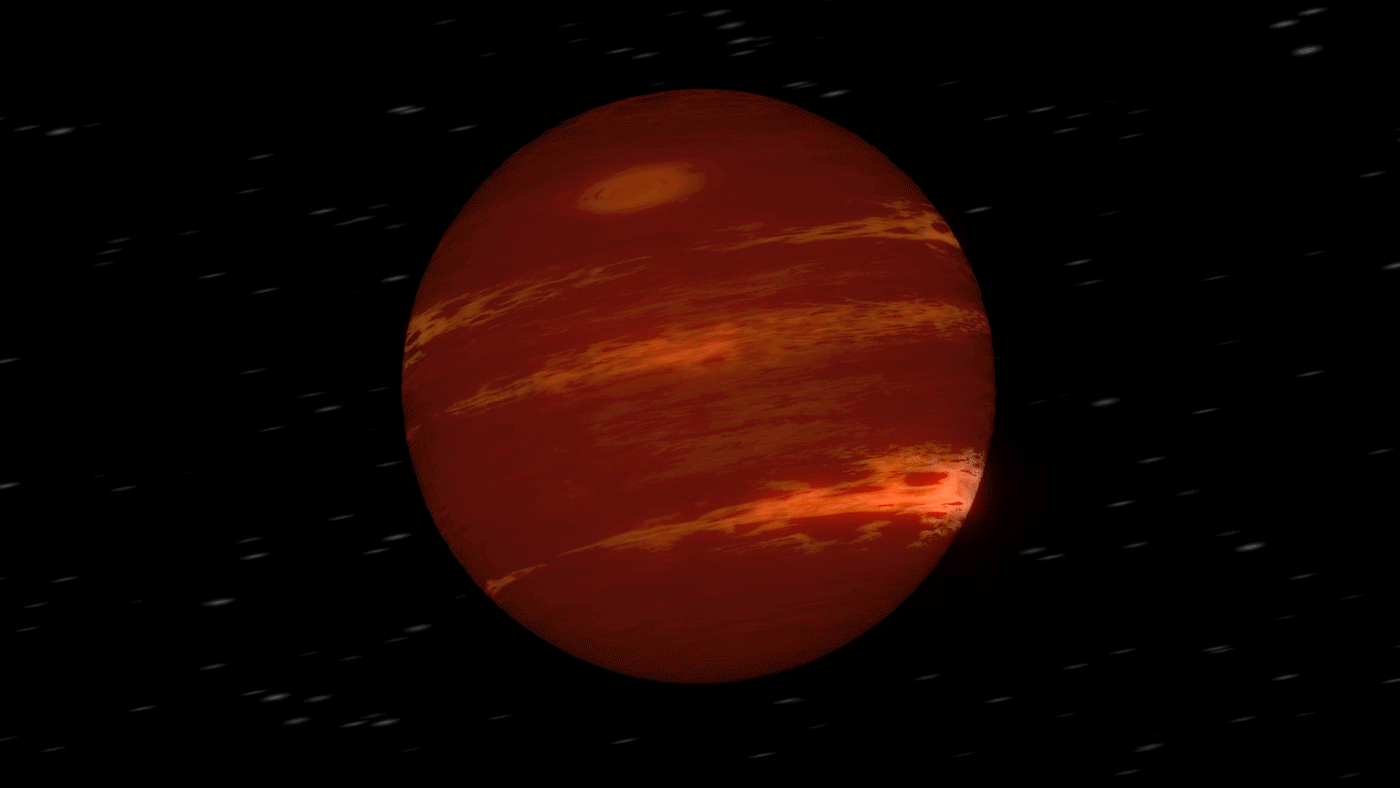Scientists Crack Space Weather Mystery: Clouds On Brown Dwarfs

Brown dwarfs might have stripes of clouds moving at different speeds and directions in their atmospheres, according to a new model that tries to explain the weather on these mysterious bodies that are bigger than planets but smaller than stars.
NASA’s Jet Propulsion Laboratory said waves of atmosphere could be causing particles to move above the surface of a brown dwarf, which in turn changes the thickness of its clouds, made of minerals called silicates and specks of iron. The clouds are separated into bands at different latitudes, and those bands circulate at different speeds from one another.
Waves in the atmosphere are kind of like waves in the ocean. NASA explained that in Earth’s atmosphere there are waves that send cold air from areas close to the poles toward the middle latitudes, and that can create or extinguish clouds.
On brown dwarfs, the waves up there would have different lengths, which would account for them making the clouds move at different paces.
“The distribution and motions of the clouds on brown dwarfs in this study are more similar to those seen on Jupiter, Saturn, Uranus and Neptune,” according to NASA. The ones on Neptune are made of ice.
Although the kind of storm most closely associated with Jupiter is its Great Red Spot, a swirling storm so large that Earth could easily fit inside and so long-lived that scientists have been observing it for centuries, the biggest planet in our solar system also has swirling bands of clouds.

Scientists making this weather model wanted to know how clouds moved on brown dwarfs, the space objects that are too small to perform nuclear fusion of hydrogen to create energy like a star but are more massive than huge planets like Jupiter — even when their diameters are roughly the same as the gas giant.
Brown dwarfs, which are mostly made of hydrogen and helium, are windy places where cloud cover can change thickness quickly. Although brown dwarfs are a sort of halfway point between stars and planets, this team of researchers found more connection to planets than stars when it came to weather.
“The atmospheric winds of brown dwarfs seem to be more like Jupiter’s familiar regular pattern of belts and zones than the chaotic atmospheric boiling seen on the Sun and many other stars,” study co-author Mark Marley, from NASA’s Ames Research Center, said in the statement.
The scientists based their model on observations from NASA’s Spitzer Space Telescope, including fluctuating brightness on six brown dwarfs over the course of a year. They rotated a few dozen times during the study period, movement that showed the team how clouds were moving in the atmosphere.
What they found does more than just give scientists insight into brown dwarfs; their model could also be the key to understanding alien worlds — planets orbiting stars outside our solar system.
“This is the first time we have seen atmospheric bands and waves in brown dwarfs,” lead author Daniel Apai from the University of Arizona in Tucson, said in the NASA statement. “It is likely the banded structure and large atmospheric waves we found in brown dwarfs will also be common in giant exoplanets.”
Their next step is to figure out what is causing the waves that create the various bands of clouds on brown dwarfs.
© Copyright IBTimes 2024. All rights reserved.





















